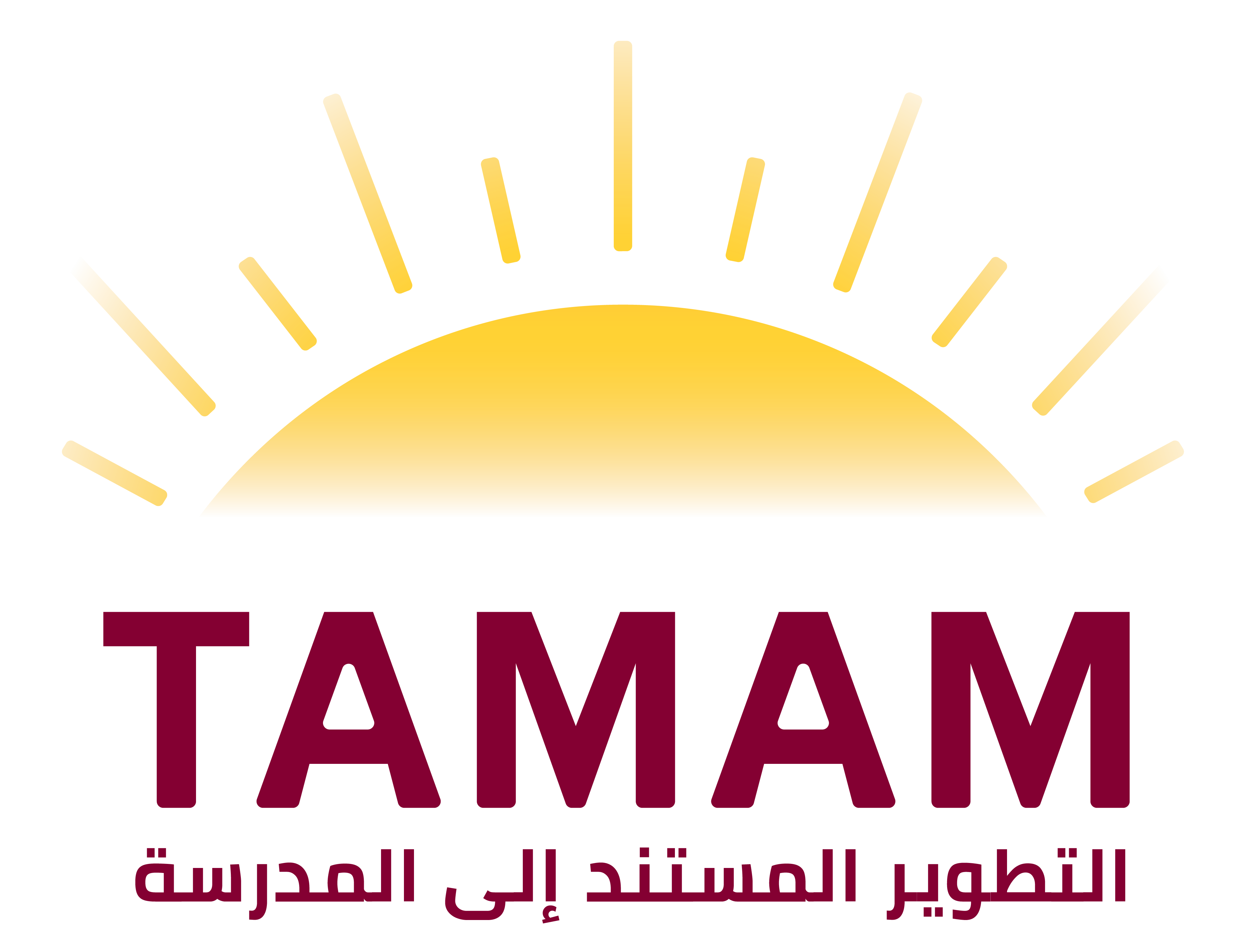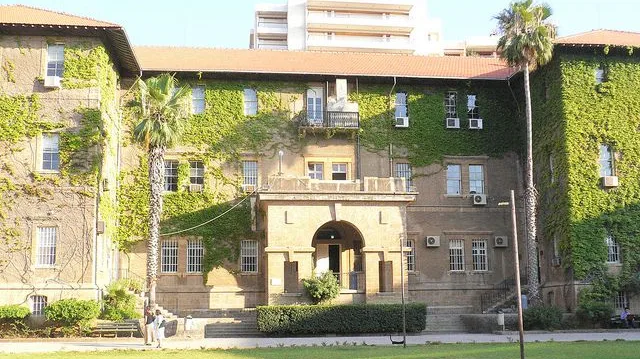محام وشريك مؤسس في مكتب رشيد فهمي كرامي للمحاماة والإستشارات القانونية. محكم ووسيط دولي معتمد لدى عدد من المراكز المحلية والعالمية. مدرب معتمد على الوساطة والتحكيم لدى نقابة المحامين في طرابلس ومركز التسوية الفعالة للنزاعات– لندن ومعهد المحكمين القانونين. وضع وشارك في العديد من الدورات التدريبية المحلية والدولية المتعلقة بالوساطة والتحكيم. تولى وضع عدة مشاريع قوانين أبرزها مشروع قانون الوساطة المعتمد من نقابة المحامين في طرابلس والمناقش حالياً أمام اللجان النيابية المختصة. كما تولى وضع قواعد مركز الوساطة والتحكيم في نقابة المحامين في طرابلس. بالإضافة الى إعداد عدد من الدراسات القانونية والمتعلقة بالوساطة والوسائل البديلة لحلّ النزاعات. خبير سابق في الوساطة لدى مؤسسة التمويل الدولية. مستشار وزير الشؤون الإجتماعية لشؤون المرأة والطفل والمشرف على خطة وزارة الشؤون الموضوعة لحماية المرأة والطفل والموقعة مع الـيونيسف. عضو في جمعية بيت التدريب والحوار
TAMAM Initiation
TAMAM began when the senior vice president of Dhahran Ahliyya School in Saudi Arabia, Dr. Sally Al Turki, approached two professors at the American University of Beirut (AUB), Dr. Saouma Boujaoude and Dr. Murad Jurdak, to propose a school-based reform initiative that could generate actionable theories grounded in the sociocultural context of the Arab region.
Dr. Rima Karami, an associate professor at AUB, joined TAMAM as a researcher two months after the project launching and soon became one of its three principal investigators and a member of its Steering Team.
Phase I (2007-2011): Capacity Building for School-Based Improvement
TAMAM’s first phase constituted the first four years, with a primary strategic goal of building the capacity of participating schools’ lead teams.
In this phase, the project included nine private schools from three Arab countries (Lebanon, Jordan, and Saudi Arabia), in addition to three public schools from Lebanon.
One of the main accomplishments in this phase was the completion of the TAMAM Capacity Building Program, stemming from the experiences of participating schools and following the guidelines of international literature.
Phase II (2011-2015): Implementing and Refining the TAMAM Capacity Building Program
TAMAM’s main strategic goals for this Phase were to continue building the capacity of the existing school lead teams and to expand to more schools in new and already participating countries.
A total of nineteen new private and public schools joined the project from the previous participating countries and from three new countries: Qatar, Oman, and Egypt. In addition, the TAMAM Capacity Building Program was adapted to be included in a USAID-funded, large-scale professional development project implemented by the Ministry of Education and Higher Education in Lebanon for 250 public schools. As a result, more than 1000 educational practitioners were trained on leading school-based improvement. Based on this large-scale project, TAMAM’s school-based improvement approach was disseminated to other projects reaching more than 700 public schools in Lebanon.
The year 2014 marked an important milestone for TAMAM. During a general gathering for the TAMAM school teams and coaches, the members of the growing TAMAM network decided to change its identity from a “project” to a “Movement” in an attempt to capture their aspirations to expand its influence and impact on schools and their stakeholders in Arab countries across the region.
Phase III (2015-2018): Expanding and Sustaining the TAMAM Movement
During this phase, the TAMAM community expanded to span 8 Arab countries comprising of 3 country hubs, 46 schools, more than 600 practitioners, researchers from 12 different universities, 31 coaches, and policymakers or representatives from the 3 ministries of education in Lebanon, Jordan, and Oman.
The Arab Thought Foundation fund was renewed with additional strategic goals added to focus on transforming TAMAM’s activities into sustainable initiatives fueling the growth of the TAMAM Movement for school-based reform in the Arab world. Hence, the new goals aimed at
publishing research, expanding to new schools and contexts, building coaching capacity as well as securing funding to ensure the Movement’s sustainability.
During this phase, TAMAM expanded to new schools and contexts, adding to its community new public schools from Lebanon and two new countries, Sudan and Palestine.
A research grant received from the LORE Foundation provided additional support to the research and development activities in 6 public schools in Lebanon, building leadership capacity in school teams and laying the foundation for establishing a country Hub in collaboration with the Lebanese Ministry of Education and Higher Education.
Two additional TAMAM country hubs were also launched during this phase in Jordan and Oman, taking the first steps towards securing financial independence to fund their expanding activities. In these two Hubs, steps were taken to build partnerships among schools, universities and policy makers in the country. In Oman, TAMAM succeeded in establishing an official partnership with the Technical Office of the Ministry of Education in the Sultanate of Oman. Additional public schools in the Sultanate participated in TAMAM, and key components of its Capacity Building Program (Competencies and school-based improvement journey) were considered to officially become part of the professional development training programs implemented by the Ministry.
Phase IV (2018-2021): Researching Impact and Supporting Hubs
In this phase, the TAMAM Movement expanded its local and international network. The TAMAM community currently spans 8 Arab countries, comprising more than 860 practitioners in 69 schools collaborating with 32 researchers from 12 different universities, 42 coaches and numerous policymakers to design and implement impactful school-based improvement. TAMAM is also networking with international initiatives with whom it shares the same vision and strategic direction.
In order to achieve the strategic goal of sustaining the educational Movement, TAMAM secured another generous fund from ATF, a new research grant from the Welfare Association (Taawon) to fund a United Nations Relief and Works Agency (UNRWA) school, Haifa Mixed Intermediate School in Beirut. In addition, and in the year 2019, TAMAM established a partnership with the Center for Civic Engagement & Community Service (CCECS) at AUB and as a result, secured new funding from Al Maymouna Education. Two Al Maymouna schools in Berkayel and Al Fakiha in Lebanon, which serve vulnerable Syrian refugees, joined TAMAM. The TAMAM Omani coaches from Sultan Qaboos University also secured a generous research grant from Oman Ministry of Higher Education Research & Innovation, covering the cost of research and development in three new schools. Research will focus on studying the impact of participating in TAMAM and implementing the TAMAM Capacity Building Program to lead school improvement in the context of Omani schools.
In addition, and as part of the TAMAM Steering Team’s continuing effort to build partnerships among schools, universities and policy makers and to establish self-sustaining country hubs, a collaborative agreement was signed with the Arab Open University (AOU) in Jordan to conduct research on the TAMAM Jordan Hub schools. Moreover, eight TAMAM participating schools from the Jordan Hub networked to jointly work on a common improvement project entitled: “Improving the teaching and learning of Arabic language as part of preserving the Arab identity of students in these schools”. The TAMAM Steering team is working closely with members of the Jordan Hub in order to develop designs that strengthen the networking capabilities of schools participating in establishing TAMAM country hubs.
Finally, TAMAM provided consultancy services to three centers at the American University of Beirut , the Center for Civic Engagement & Community Service , the Communication Skills Program, and the Nature Conservation Center – to achieve its goal of introducing an inquiry-based approach to the design of improvement initiatives impacting educational institutions.
View Oman Ministry of Higher Education Research & Innovation Proposal
Phase V (2021-2025): Sustain and Strengthen TAMAM Movement for School-Based Improvement in the Arab World
For the past fourteen years, TAMAM key strategic goal has been to build leadership capacity for change at the school level while providing the support needed to initiate and support innovative interventions aimed at improving student learning. During these years, a culturally grounded model for capacity building was developed implemented and tested in different contexts across the Arab region. The capacity-building model was also evaluated and refined accordingly, and initial steps have been taken to collect evidence of impact to prove the model’s effectiveness and impact on student learning. While these objectives will be maintained, the focus will shift to sustaining and strengthening TAMAM as an educational movement by building on its assets of membership, partnerships, networks, research lab, and other resources. Thus, the aim of TAMAM phase V [2021-2025] is to sustain and strengthen TAMAM movement for school-based improvement in the Arab World towards establishing a networked improvement community with the ultimate aim of improving student agency to learn.
The PST aims to promote and expand the TAMAM movement through expanding its active membership and defining the benefits and roles members have in advocating for the TAMAM movement. The members are the most precious resource to bring the movement to life and sustain it over the long run; therefore, fostering their commitment and participation is important to expand the movement and create momentum for change. The PST also seeks to establish partnership with organizations and institutions especially those that can influence policy decision-making in different Arab countries to draw on their concerted efforts to promote the movement and to introduce changes to educational policies. Additionally, the PST aims to invest in the establishment of networked improvement communities that allows participating members and schools to work together for a short or long period towards a common goal. These networks have the potential to accelerate improvement and make it scalable to a range of context, which will have a strong effect in spreading the TAMAM movement and providing evidence of its impact that can be used as a leverage for policy change. Moreover, the PST will continue to enhance TAMAM research lab activities and its design outcomes, with a special attention on experientially developing prototypes that assist in fulfilling the TAMAM vision and on conducting and publishing more research in Arabic and English on the impact of the model on students, teachers, and principals. The PST will focus in this phase on increasing the visibility and on sustaining the TAMAM activities in different ways to expand the movement’s reach and impact.

